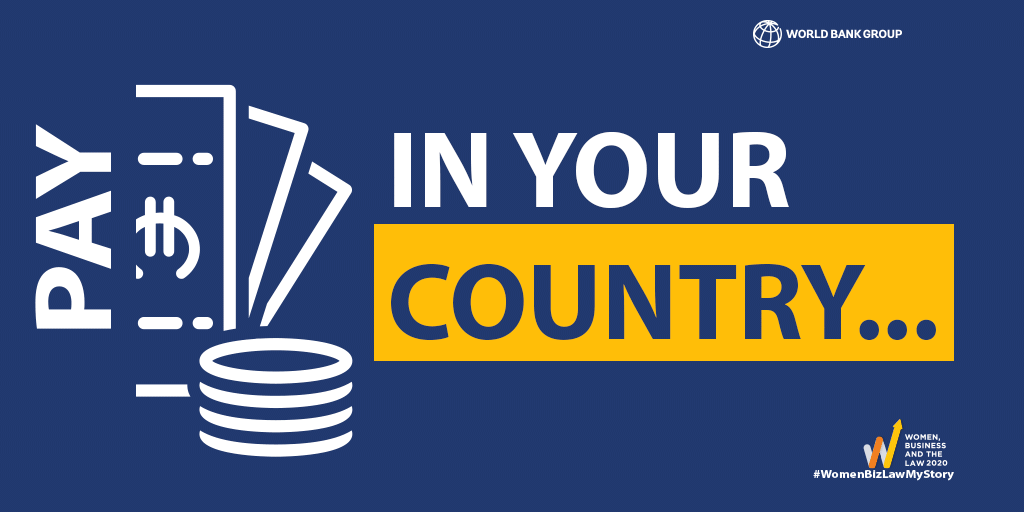 Au-delà de l'égalité salariale
Au-delà de l'égalité salariale
Sixty years after the men’s tournament began, the first Women’s World Cup was held in 1991. We both grew up watching the games and were inspired to join all-girls football teams at our high schools. While some of us only could dream of scoring a goal, others aspired to play professionally.
Yet it was not that long ago that many countries banned women from playing football altogether. The sport was considered “unsuitable” for women in the United Kingdom, which barred them from playing from 1921 to 1971, and too “violent” for women in Brazil, which outlawed women’s football from 1941 to 1979. Though these bans have since been lifted, women continue to face obstacles in leveling the playing field with men.
From football players to factory workers, women in every part of the world are paid less than men solely because of their gender. Recent estimates indicate that globally, women are paid 77 cents for every dollar earned by men. One of the first steps to address the gender pay gap is through law. The World Bank’s Women, Business and the Law index evaluates the legislative framework that shapes women’s prospects as employees and entrepreneurs in 190 countries. Under its Pay indicator, Women, Business and the Law 2020 finds that the average score is just 66.1 out of 100. This means that 70% of countries in the world still have laws and regulations that may contribute to the gender pay gap.
Source: Women, Business and the Law database.
Most countries address wage discrimination in their laws, such as by mandating equal pay for equal work. However, paying women less than men for the same work is only part of the story. Women and men are often sorted into different sectors, with women typically concentrated in lower-paying occupations. That’s why policymakers must go beyond equal pay to mandate equal remuneration for work of equal value and remove bans on the jobs that women can do.
The principle of equal remuneration for work of equal value, enshrined in the International Labor Organization’s 1951 Convention on Equal Remuneration, is distinct from the concept of equal pay for equal work. Compare, for example, cleaners (female-dominated) with drivers (male-dominated). While objectively different, these jobs can be considered equal in value. Today, less than half of countries worldwide—88 total—have mandated equal remuneration for work of equal value.
Removing restrictions on the jobs women can do is also critical in tackling the gender pay gap. Ninety countries place legal restrictions on women’s employment, barring them from working at night, limiting the work they can do in certain industries or prohibiting them from working in jobs deemed too “dangerous.” Many of the occupations where women face such barriers are “3D jobs,” i.e. the dangerous, difficult and dirty jobs that no one wants to do that may in turn offer higher wages. In Sierra Leone, for example, women are banned from working in mining. In Azerbaijan, women are prohibited from being metro train drivers. And in Vietnam, women are barred from installing off-shore oil rigs.
Although Pay is the second-lowest scoring indicator in the Women, Business and the Law index, it also is one of the areas that sees the most reform. Since 2017, 12 economies improved legislation affecting women’s pay. For example, the United Arab Emirates removed all restrictions on women’s employment and Thailand legally mandated equal remuneration for work of equal value. When it comes to women’s football, progress is also being made. While our mothers' generation saw the lifting of bans on women’s football, ours is fighting for equal pay. Players from Nigeria to the United States are voicing their demands for fair compensation. Hopefully strides will continue to be made on the gender pay gap globally so that our daughters' generation will be able to fulfill their economic potential.
We would love to hear from you!
Post your comments below.
Or if you’re following us on Instagram:
- Send us a photo of you with your daughter, mother or grandmother.
- Tell us: What work opportunities do you have compared to your mother or grandmother? What else needs to change to improve opportunities for your daughter? Tell us at #WomenBizLawMyStory
Or if you’re following us on Twitter, Facebook or LinkedIn:
- Comment on: What work opportunities do you have compared to your mother or grandmother? What else needs to change to improve opportunities for your daughter?





Join the Conversation